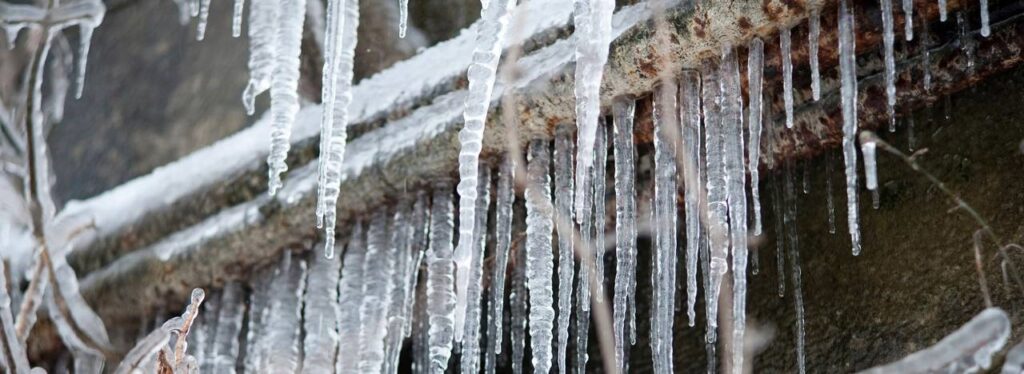Key Approaches for Preventing Frozen Plumbing in Cold Weather
Key Approaches for Preventing Frozen Plumbing in Cold Weather
Blog Article
Just how do you feel with regards to 6 Ways to Prevent Frozen Pipes?

Cold weather can wreak havoc on your plumbing, especially by freezing pipes. Right here's exactly how to avoid it from happening and what to do if it does.
Intro
As temperature levels drop, the danger of frozen pipes increases, potentially resulting in pricey fixings and water damages. Comprehending how to prevent icy pipes is important for homeowners in cold climates.
Prevention Tips
Insulating at risk pipes
Cover pipelines in insulation sleeves or make use of warm tape to safeguard them from freezing temperature levels. Concentrate on pipes in unheated or outside areas of the home.
Home heating techniques
Maintain interior rooms effectively heated, particularly locations with plumbing. Open up closet doors to enable cozy air to flow around pipes under sinks.
Exactly how to recognize frozen pipes
Seek decreased water flow from faucets, uncommon smells or sounds from pipelines, and noticeable frost on exposed pipes.
Long-Term Solutions
Structural changes
Take into consideration rerouting pipelines far from outside walls or unheated areas. Include extra insulation to attic rooms, basements, and crawl spaces.
Updating insulation
Invest in top quality insulation for pipes, attics, and walls. Appropriate insulation aids maintain constant temperature levels and decreases the threat of icy pipes.
Shielding Outside Plumbing
Garden hose pipes and outside faucets
Separate and drain pipes garden tubes before winter. Set up frost-proof spigots or cover outdoor taps with shielded caps.
Understanding Frozen Pipes
What triggers pipes to ice up?
Pipes ice up when exposed to temperature levels below 32 ° F (0 ° C) for prolonged durations. As water inside the pipelines freezes, it expands, putting pressure on the pipe walls and potentially triggering them to rupture.
Threats and problems
Icy pipelines can bring about water supply disruptions, building damages, and costly repair services. Burst pipes can flooding homes and create substantial architectural damages.
Indications of Frozen Pipeline
Identifying icy pipes early can stop them from rupturing.
What to Do If Your Pipes Freeze
Immediate activities to take
If you believe frozen pipelines, keep faucets open to ease stress as the ice thaws. Make use of a hairdryer or towels taken in warm water to thaw pipelines slowly.
Conclusion
Stopping frozen pipelines needs proactive procedures and quick feedbacks. By comprehending the reasons, indicators, and safety nets, property owners can protect their plumbing throughout cold weather.
5 Ways to Prevent Frozen Pipes
Drain Outdoor Faucets and Disconnect Hoses
First, close the shut-off valve that controls the flow of water in the pipe to your outdoor faucet. Then, head outside to disconnect and drain your hose and open the outdoor faucet to allow the water to completely drain out of the line. Turn off the faucet when done. Finally, head back to the shut-off valve and drain the remaining water inside the pipe into a bucket or container. Additionally, if you have a home irrigation system, you should consider hiring an expert to clear the system of water each year.
Insulate Pipes
One of the best and most cost-effective methods for preventing frozen water pipes is to wrap your pipes with insulation. This is especially important for areas in your home that aren’t exposed to heat, such as an attic. We suggest using foam sleeves, which can typically be found at your local hardware store.
Keep Heat Running at 65
Your pipes are located inside your walls, and the temperature there is much colder than the rest of the house. To prevent your pipes from freezing, The Insurance Information Institute suggests that you keep your home heated to at least 65 degrees, even when traveling. You may want to invest in smart devices that can keep an eye on the temperature in your home while you’re away.
Leave Water Dripping
Moving water — even a small trickle — can prevent ice from forming inside your pipes. When freezing temps are imminent, start a drip of water from all faucets that serve exposed pipes. Leaving a few faucets running will also help relieve pressure inside the pipes and help prevent a rupture if the water inside freezes.
Open Cupboard Doors
Warm your kitchen and bathroom pipes by opening cupboards and vanities. You should also leave your interior doors ajar to help warm air circulate evenly throughout your home.

I'm certainly very occupied with Prevent Frozen Pipes and I am hoping you liked the new post. Kindly take the time to share this blog post if you enjoyed reading it. We love your readership.
Call Today Report this page